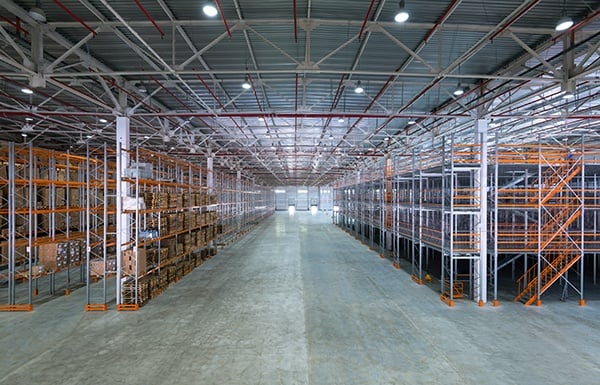
With demand for logistics space increasing and shifting needs for warehouse locations, actual warehouse occupancy cost is growing even faster than rental rates. Luckily, the right strategies can help you to keep those expenses down and maximize your ROI on your warehouse expenditures.
Look at the Whole Cost Picture
The first secret to managing cost is to look at all of your warehouse costs as a unit. Unless you need to dazzle clients or recruits, a cheap class C office can do many of the same things as a fancy class A building. In warehousing, though, small tweaks in the building or in its location can have a gigantic impact on the total efficiency of your operation. Before signing a seemingly cheap lease, carefully analyze if a more expensive space could save you money in more efficient operation because of a better layout or reduced transit time due to a better location, or many other factors. Your total warehouse occupancy cost could end up much lower by choosing a more expensive space when you take this holistic view.
Use our free Warehouse Space Calculator
Manage Warehouse Occupancy Cost by Thinking in Three Dimensions
As warehouse spaces get taller and taller, you're able to do more with less space, at least on a per-square-foot basis. Most savvy users know that there's value in the cube. However, just because you have a tall space doesn't mean that you can always use all of the height across your entire space. Break areas, shipping and receiving areas, light assembly and kitting areas and the like all usually operate on a more human scale. This means that you could easily be wasting 30 feet worth of vertical space above the work areas. The solution? Look into adding mezzanines to your space. While that space might not be as versatile as space on the ground level, reclaiming that space can still increase your efficiency and lower overall cost.
Invest in Automation
Warehouses may store pallets, boxes and SKUs, but they run on data. Having the right warehouse management systems and technology allows you to boost your warehouse's effectiveness and lower your warehouse occupancy cost. Better tracking lets you store more items, more tightly, and in higher racks. This lets you shrink your space and save on rent. It can also streamline operations, reducing labor and other operational costs.
Outsource Special Needs
Another way to reduce warehouse occupancy cost is to simply have less warehouse space on your books. Just-in-time deliveries from vendors and quick turnarounds on your inventory help you reduce your total warehousing cost. At the same time, strategically using contract and public warehousing services for overload let you carry enough warehouse space to meet your constant needs while having extra capacity for busy times or unexpected peaks. It doesn't make sense to lease 100,000 square feet when you usually only need 60,000. Then again, it also doesn't make sense to only lease 30,000 square feet and use high-cost flexible resources for the remaining 30,000 square fee that you always need.
Other great Warehouse and Occupancy Cost articles:
Reduce Your Commercial Occupancy Costs
Successfully Leasing Commercial Warehouse Space
Maximizing Warehouse Space... Even When it Seems Full
Don't forget to subscribe to our blog!








